
Maritime shipping company Genco (NYSE:GNK) announced better-than-expected revenue in Q2 CY2025, with sales up 6.1% year on year to $80.94 million. Its non-GAAP profit of $0.14 per share was significantly above analysts’ consensus estimates.
Is now the time to buy Genco? Find out by accessing our full research report, it’s free.
Genco (GNK) Q2 CY2025 Highlights:
- Revenue: $80.94 million vs analyst estimates of $48.88 million (6.1% year-on-year growth, 65.6% beat)
- Adjusted EPS: $0.14 vs analyst estimates of -$0.13 (significant beat)
- Adjusted EBITDA: $14.3 million vs analyst estimates of $14.4 million (17.7% margin, 0.7% miss)
- Operating Margin: -5.3%, down from 34.5% in the same quarter last year
- Free Cash Flow Margin: 3.8%, down from 35.9% in the same quarter last year
- owned vessels: 42, down 1 year on year
- Market Capitalization: $720.4 million
John C. Wobensmith, Chief Executive Officer, commented, “We continue to execute on our differentiated value strategy, as we position the Company to return capital to shareholders and expand our earnings power through drybulk market cycles. Declaration of our Q2 dividend marks our 24th consecutive dividend, representing the longest uninterrupted dividend period among our drybulk peer group. Including Q2, total dividends to shareholders will amount to $6.915 per share, or approximately 41% of our current share price.”
Company Overview
Headquartered in NYC, Genco (NYSE:GNK) is a shipping company that transports dry bulk cargo along worldwide maritime routes.
Revenue Growth
Reviewing a company’s long-term sales performance reveals insights into its quality. Any business can experience short-term success, but top-performing ones enjoy sustained growth for years. Unfortunately, Genco’s 5.3% annualized revenue growth over the last five years was tepid. This was below our standard for the industrials sector and is a tough starting point for our analysis.
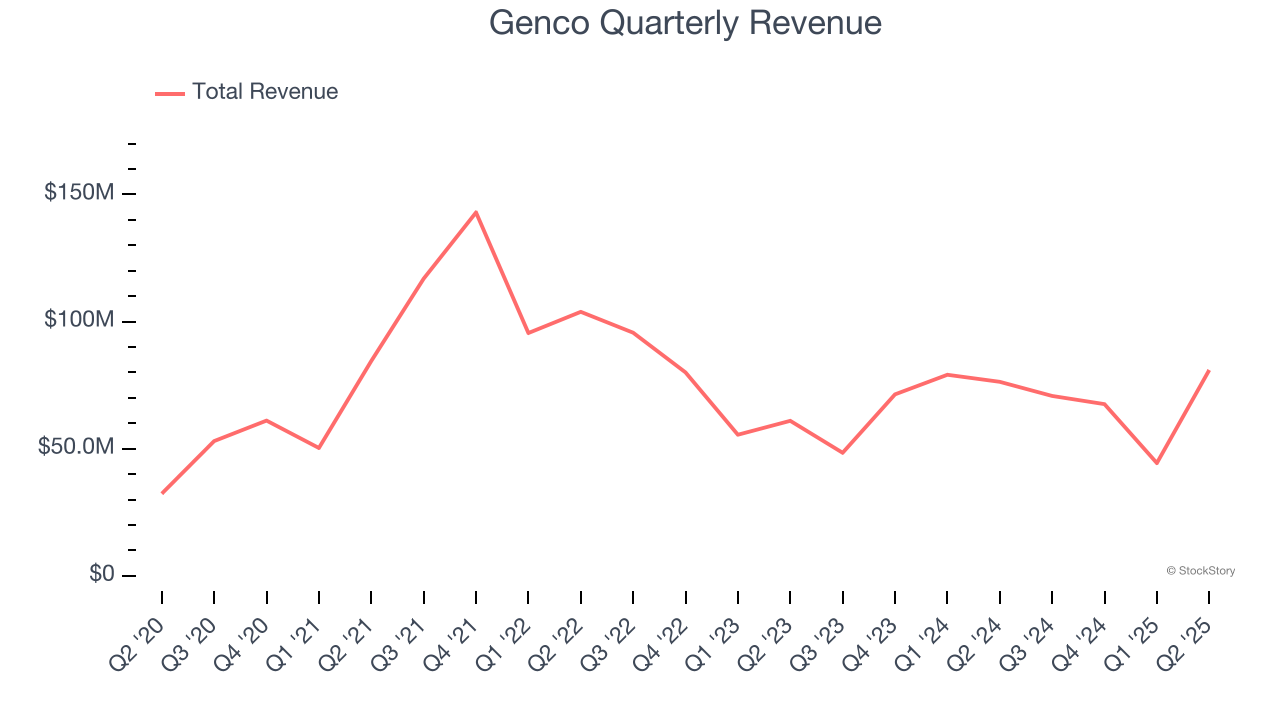
We at StockStory place the most emphasis on long-term growth, but within industrials, a half-decade historical view may miss cycles, industry trends, or a company capitalizing on catalysts such as a new contract win or a successful product line. Genco’s performance shows it grew in the past but relinquished its gains over the last two years, as its revenue fell by 5% annually. Genco isn’t alone in its struggles as the Marine Transportation industry experienced a cyclical downturn, with many similar businesses observing lower sales at this time. 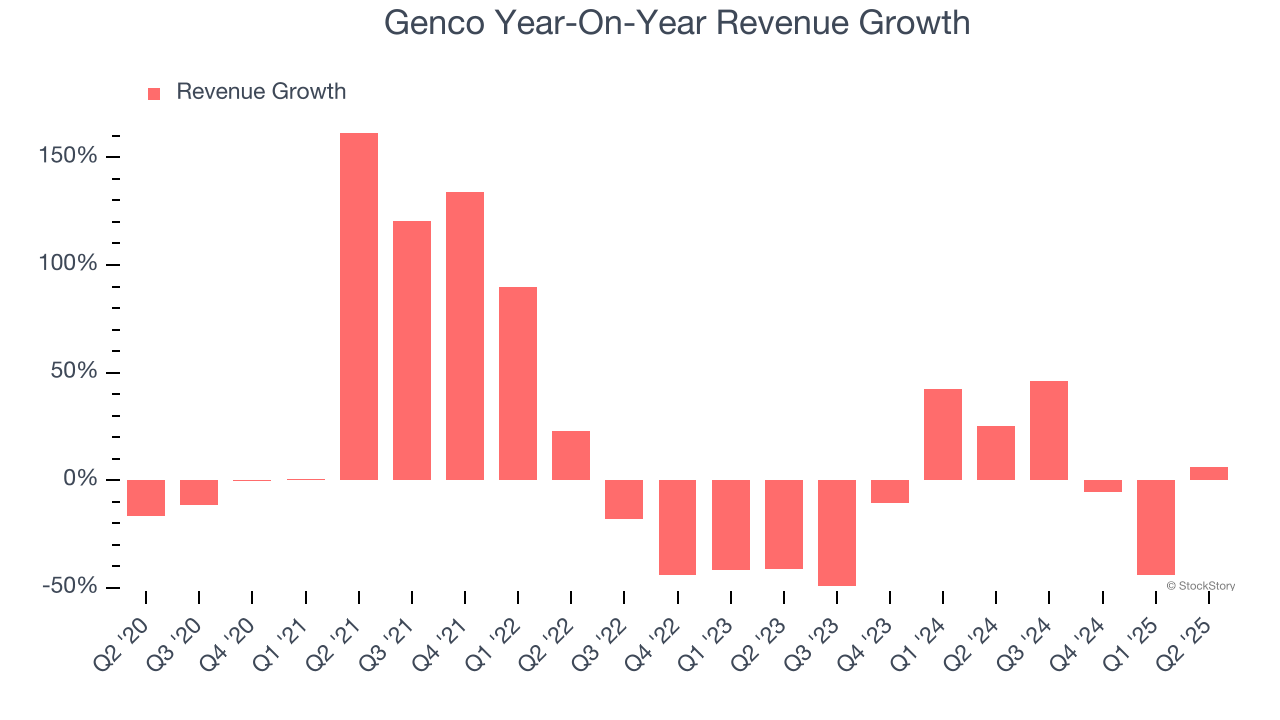
We can better understand the company’s revenue dynamics by analyzing its number of owned vessels, which reached 42 in the latest quarter. Over the last two years, Genco’s owned vessels averaged 2.2% year-on-year declines. Because this number is higher than its revenue growth during the same period, we can see the company’s monetization has fallen. 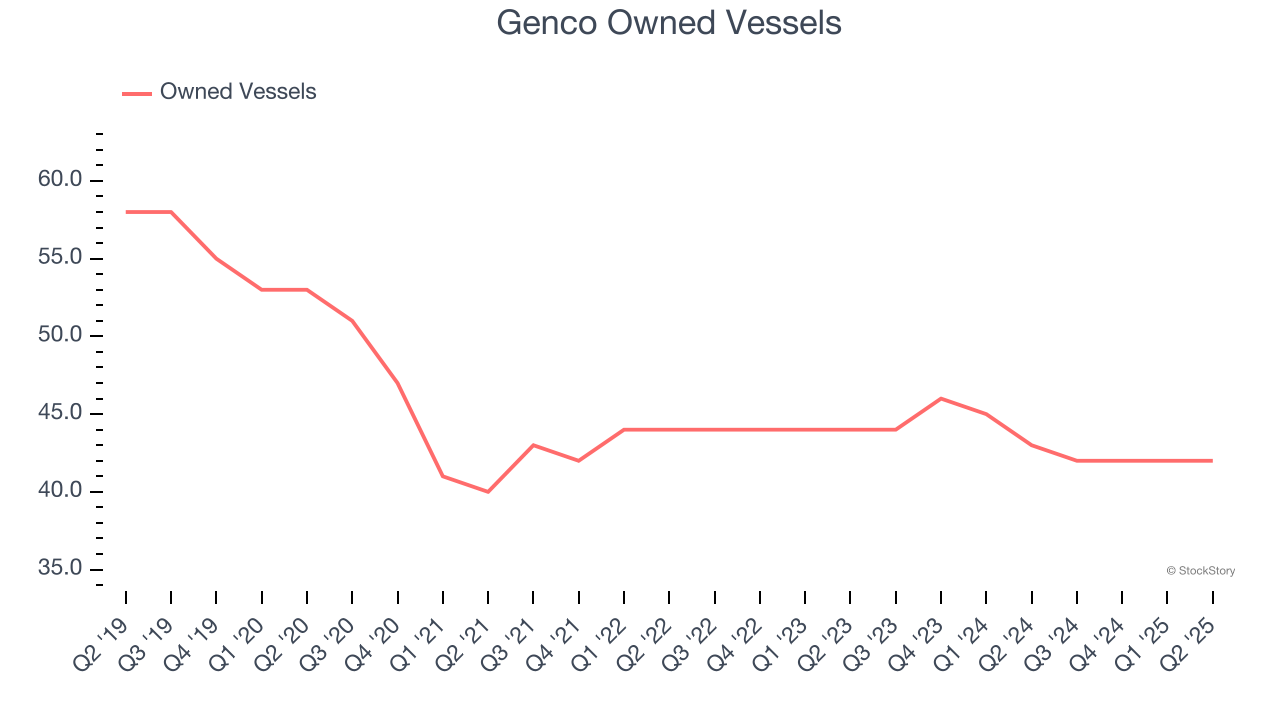
This quarter, Genco reported year-on-year revenue growth of 6.1%, and its $80.94 million of revenue exceeded Wall Street’s estimates by 65.6%.
Looking ahead, sell-side analysts expect revenue to remain flat over the next 12 months. Although this projection implies its newer products and services will catalyze better top-line performance, it is still below the sector average.
Software is eating the world and there is virtually no industry left that has been untouched by it. That drives increasing demand for tools helping software developers do their jobs, whether it be monitoring critical cloud infrastructure, integrating audio and video functionality, or ensuring smooth content streaming. Click here to access a free report on our 3 favorite stocks to play this generational megatrend.
Operating Margin
Genco has been a well-oiled machine over the last five years. It demonstrated elite profitability for an industrials business, boasting an average operating margin of 23.3%. This result isn’t surprising as its high gross margin gives it a favorable starting point.
Analyzing the trend in its profitability, Genco’s operating margin rose by 23.1 percentage points over the last five years, as its sales growth gave it operating leverage. Its expansion was impressive, especially when considering the cycle turned in the wrong direction and most of its Marine Transportation peers observed plummeting revenue and margins.
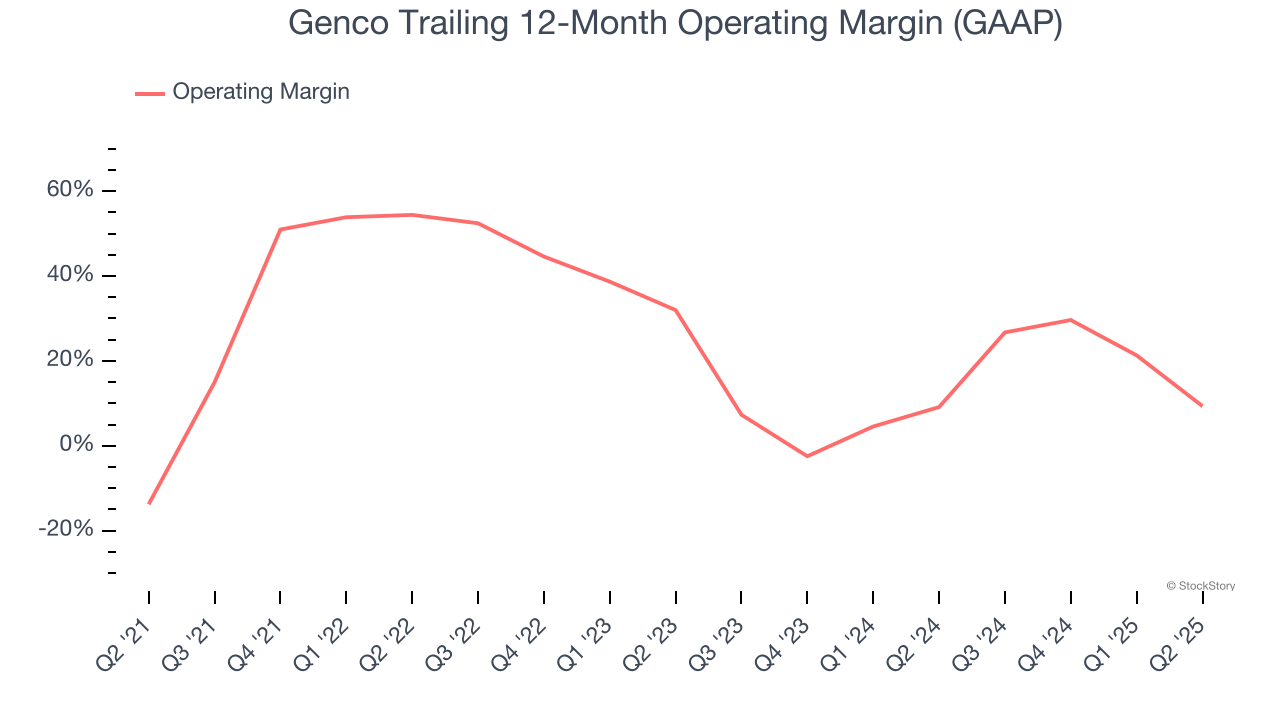
In Q2, Genco generated an operating margin profit margin of negative 5.3%, down 39.8 percentage points year on year. Since Genco’s operating margin decreased more than its gross margin, we can assume it was less efficient because expenses such as marketing, R&D, and administrative overhead increased.
Earnings Per Share
Revenue trends explain a company’s historical growth, but the long-term change in earnings per share (EPS) points to the profitability of that growth – for example, a company could inflate its sales through excessive spending on advertising and promotions.
Genco’s full-year EPS flipped from negative to positive over the last five years. This is encouraging and shows it’s at a critical moment in its life.
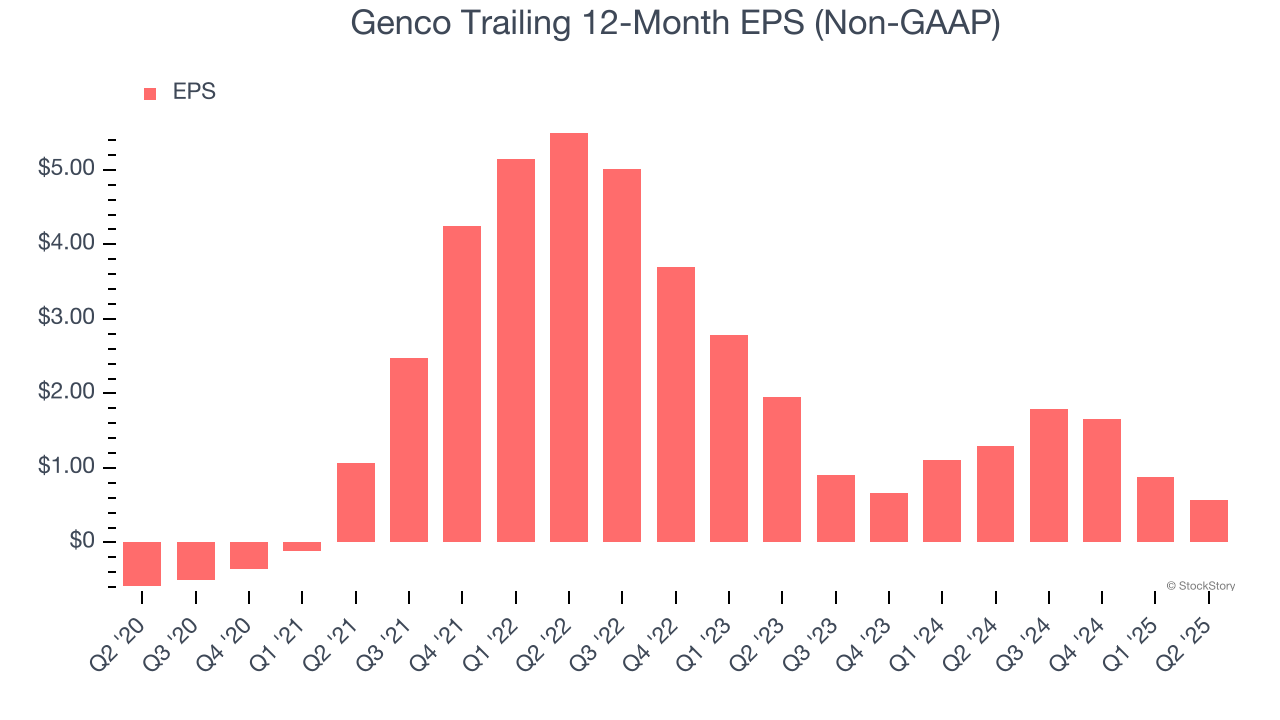
Like with revenue, we analyze EPS over a more recent period because it can provide insight into an emerging theme or development for the business.
Sadly for Genco, its EPS declined by more than its revenue over the last two years, dropping 46.2%. This tells us the company struggled to adjust to shrinking demand.
Diving into the nuances of Genco’s earnings can give us a better understanding of its performance. Genco’s operating margin has declined by 26.6 percentage points over the last two years. This was the most relevant factor (aside from the revenue impact) behind its lower earnings; interest expenses and taxes can also affect EPS but don’t tell us as much about a company’s fundamentals.
In Q2, Genco reported adjusted EPS at $0.14, down from $0.46 in the same quarter last year. Despite falling year on year, this print easily cleared analysts’ estimates. Over the next 12 months, Wall Street expects Genco’s full-year EPS of $0.56 to grow 68.8%.
Key Takeaways from Genco’s Q2 Results
We were impressed by how significantly Genco blew past analysts’ EPS expectations this quarter. We were also excited its revenue outperformed Wall Street’s estimates by a wide margin. On the other hand, its EBITDA slightly missed. Zooming out, we think this was a good print with some key areas of upside. The stock remained flat at $16.77 immediately after reporting.
Genco put up rock-solid earnings, but one quarter doesn’t necessarily make the stock a buy. Let’s see if this is a good investment. We think that the latest quarter is only one piece of the longer-term business quality puzzle. Quality, when combined with valuation, can help determine if the stock is a buy. We cover that in our actionable full research report which you can read here, it’s free.
